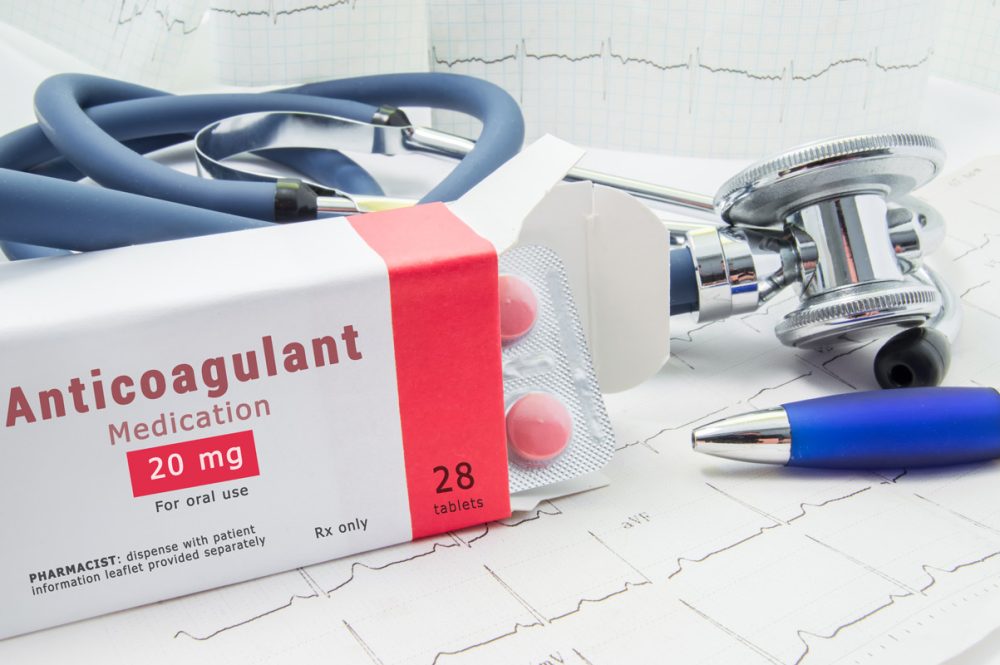Advertisment
Comparing the cost-effectiveness of treatments for blood clots in cancer patients

Research conducted by UC Davis Comprehensive Cancer Center and the University of Cincinnati shows that direct oral anti-coagulant (DOAC) drugs are more effective and are more cost-effective than low molecular weight heparin (LMWH) for treating cancer-associated thrombosis (CAT).
A new study to be published in the Annals of Internal Medicine on December 27, 2022 examines the cost-effectiveness of the four most utilized anticoagulation strategies for blood clots, which include LMWH, apixaban, edoxaban and rivaroxaban. Authors of the study include oncologist and Assistant Professor of Medicine Shuchi Gulati, a clinician scientist with UC Davis, and Professor Emeritus of Clinical Medicine Mark H. Eckman with the University of Cincinnati.
“For reasons not completely understood, cancer can increase the risk of blood clots and treatments such as chemotherapy can further increase the risk. Cancer patients with CAT face double the mortality rate compared to cancer patients without thrombosis. CAT also adds a significant financial burden for these patients,” said Gulati who is the corresponding author for the study.
For many years, injection of low molecular weight heparin has been the treatment of choice in patients who have cancer-associated thrombosis. The DOACs came on the scene eight or nine years ago and are considered to have better safety and efficacy profiles.
“Clinical trials have shown improved efficacy and a decreased risk of major bleeding with the DOACs, but the question is whether people will be willing to pay the additional cost to get the better outcome. Many oncologists have already adopted DOACs in their clinical practice, so this is a key issue,” Gulati said.
These drugs were compared head-to-head using a computer model Eckman and Gulati constructed that simulates major health events that happen to a cohort of patients with cancer over time who have experienced a blood clot. The model simulates events including recurrent pulmonary emboli, recurring DVT without pulmonary emboli, major bleeds and clinically relevant non-major bleeds as well as mortality. Then, over the course of the lifetime of the patient cohort, the study examined the accumulating lifetime costs and lifetime effectiveness measured in a metric called quality-adjusted life years (QALYs).
“QALYs are basically years lived by the members of the cohort but adjusted for the quality of life in the different health states they experience over that time,” Gulati said. “If you were to have a recurrent blood clot or a major bleed for instance, you would have a decrease in your quality of life.”
In the base-case analysis, using the cost of drugs purchased at a federal facility such as the Veteran’s Administration, apixaban was favored as being more effective and less costly than either LMWH or edoxaban while indicating rivaroxaban was not cost-effective. However, the study results were vastly different when analyzing average prices from GoodRx, a free online service that provides drug coupons for discounts on medications. In this scenario, if decision makers were unwilling to spend more than $50,000 per QALY, edoxaban was favored, and using the contemporary threshold for societal willingness to pay, rivaroxaban was cost-effective, with an incremental cost-effectiveness ratio of just more than $50,000 per QALY.
Gulati said the findings demonstrate a stark difference between the real-world cost of direct oral anticoagulants and drug prices from the Veteran’s Administration and will likely have implications for value-based price benchmarks in the United States. She added that an individual’s insurance coverage plan can make a huge difference in the patient’s out-of-pocket costs for these medications.
“Most importantly, all the DOACs are more effective and have a better side-effect profile than low molecular weight heparin,” Eckman concluded. “Which of those is the most cost-effective is going to depend for any given patient on what the cost of those drugs will be for them. That decision can be one that is made in concert with the oncologist and the patient.”





